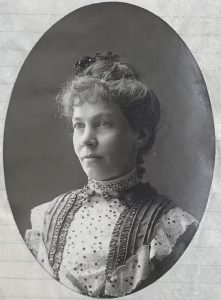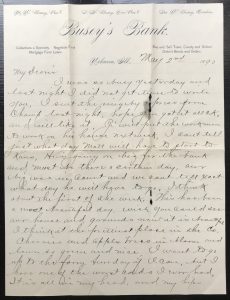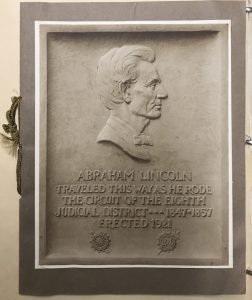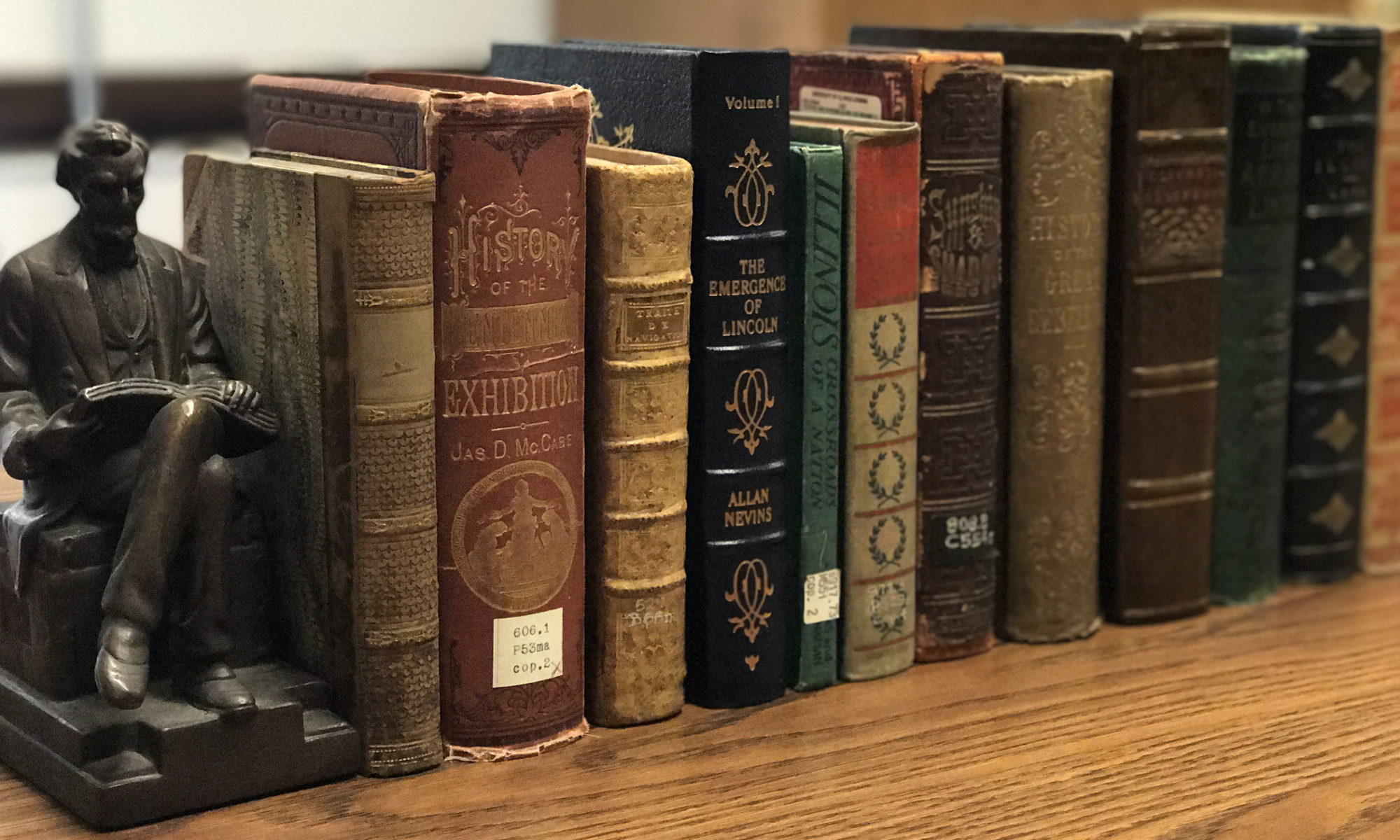
Portrait of Kate Baker Busey, circa 1890’s
Kate Baker Busey was an artist, teacher, and social reformer in Champaign-Urbana in the early 20th century. Born in 1855 just before the Civil War and raised by socialist parents, Kate grew up in a time and place where progressive notions were rare and racial inequality was pervasive. Kate had a unique childhood among the former members of the socialist commune Ceresco in Cobden, Illinois—a town in the southern tip of the state. Kate’s community of social reformers had moved to Cobden from Wisconsin when Kate was a baby, after the experimental phalanx failed to sustain itself in the northern forest. Southern Illinois was very conservative at the time, aligning with the political ideals of the South; the Ceresco families stood out in the town as progressives. In the years leading up to the Civil War, the group was active in the Underground Railroad, much to the dismay of their neighbors. Her progressive upbringing led Kate to pursue social reform for the rest of her life—whether it was racial equality, women’s suffrage, or equal education.
Kate Baker lived in Cobden, Illinois, until she turned eighteen. Following her graduation from high school, Kate attended normal school in St. Louis, Missouri, to learn how to teach art. She followed her college education with further art training in Cincinnati, Ohio, where she learned wood carving, commonly thought of at that time as a men’s discipline.
Kate’s travels didn’t end in Ohio; after completing her training in wood carving, she worked as a teacher in Savoy, Illinois, for a few years before deciding to become an instructor at the Hampton Institute, a new technical school for African and Native Americans in Virginia (it is now known as Hampton University). From 1884-1886, Kate taught mechanical drawing and wood carving to night school students, who worked at the school during the day to pay for their tuition. The Baker-Busey-Dunlap Family Papers ,1866-1933 (MS 830) contain assessments, brochures, and letters from Kate’s time at the Hampton Institute. These materials portray an important moment in history when nonwhite students could begin to access and attain higher education in America.
After two years at the Hampton Institute, Kate moved to Champaign, Illinois, to work for her brother-in-law, Hiram Dunlap, at the Champaign Daily Gazette. The newspaper was where she first heard of George Busey, an Indian Agent at the Colorado River Agency in Yuma, Arizona. When the newspaper printed a letter from Busey asking for teachers to move to Arizona and work on the reservation, Kate packed her bags.

Letter from George Busey to Kate Baker Busey, 2 May 1890
George Busey was immediately taken by Kate when she arrived in Yuma. The two worked side by side at the Colorado River Agency from 1887-1889. In May 1890, Kate Baker married George Busey in Cobden, Illinois. They soon moved to Urbana, where they resided for the rest of their lives. The Baker-Busey-Dunlap Family Papers contain extensive correspondence between Kate and George, such as this 1890 letter sent just before their wedding day, in which George wrote that he sent Kate her engagement ring by express mail from Champaign to Cobden.
Once in Urbana, Kate began getting to know her community through local women’s clubs. She was a founding member of the Daughters of the American Revolution Alliance Chapter and the Fortnightly Club, a group that met to discuss literary culture and topics in world history, as well as current events. The Fortnightly Club of Urbana, Illinois Records, 1895-2003, (MS 638) documents the history of the club and topics discussed (such as women’s suffrage and the place of women in the home) throughout the years.

One of the last endeavors Kate took on before her death in 1934 was to mark courthouses where President Lincoln practiced law. She worked with the DAR Alliance chapter and Judge Cunningham to raise money for bronze plaques engraved with Lincoln’s profile to place at each location on Lincoln’s circuit. Seventeen counties were marked with plaques in the 1920s, and many of them are still there to this day. These plaques are just one example of the legacy of Kate Baker Busey in Champaign County, still visible in 2020. You can discover more about Kate’s work with the DAR in Daughters of the American Revolution, Alliance Chapter 642 Records and Scrapbooks, 1923-1956 (MS 813).
Image Sources:
From MS 813 Daughters of the American Revolution, Alliance Chapter 642 Records and Scrapbooks, 1923-1956
Invitation to the dedication of the Champaign County Memorial Marker of the Lincoln Circuit, 6 May 1922. Alliance Chapter Historian’s Report Book—D.A.R. 1923-1924 to 1937.
Portrait of Kate Baker Busey, undated. Alliance Chapter Historian’s Report Book—D.A.R.
From MS 830 Baker-Busey-Dunlap Family Papers, 1866-1993
Letter from George Busey to Kate Baker Busey, 2 May 1890
Select IHLC Resources:
MS 830: Baker-Busey-Dunlap Family Papers, 1866-1993.
MS 638: Fortnightly Club of Urbana, Illinois Records, 1895-2003.
